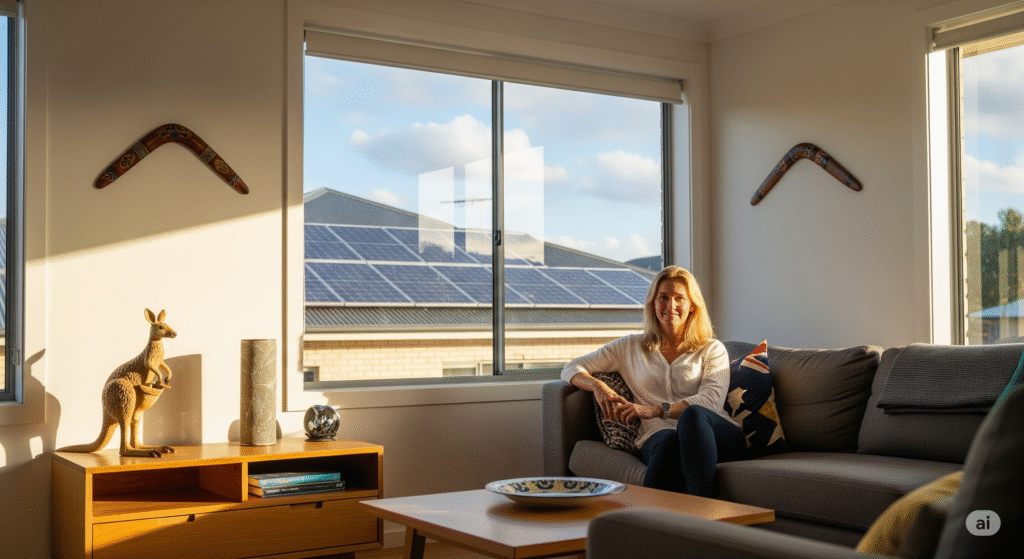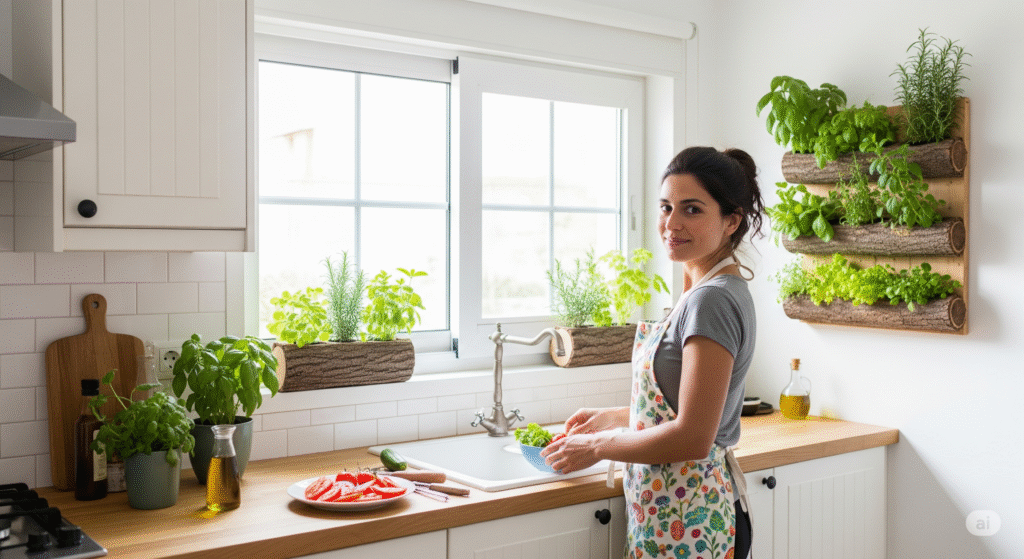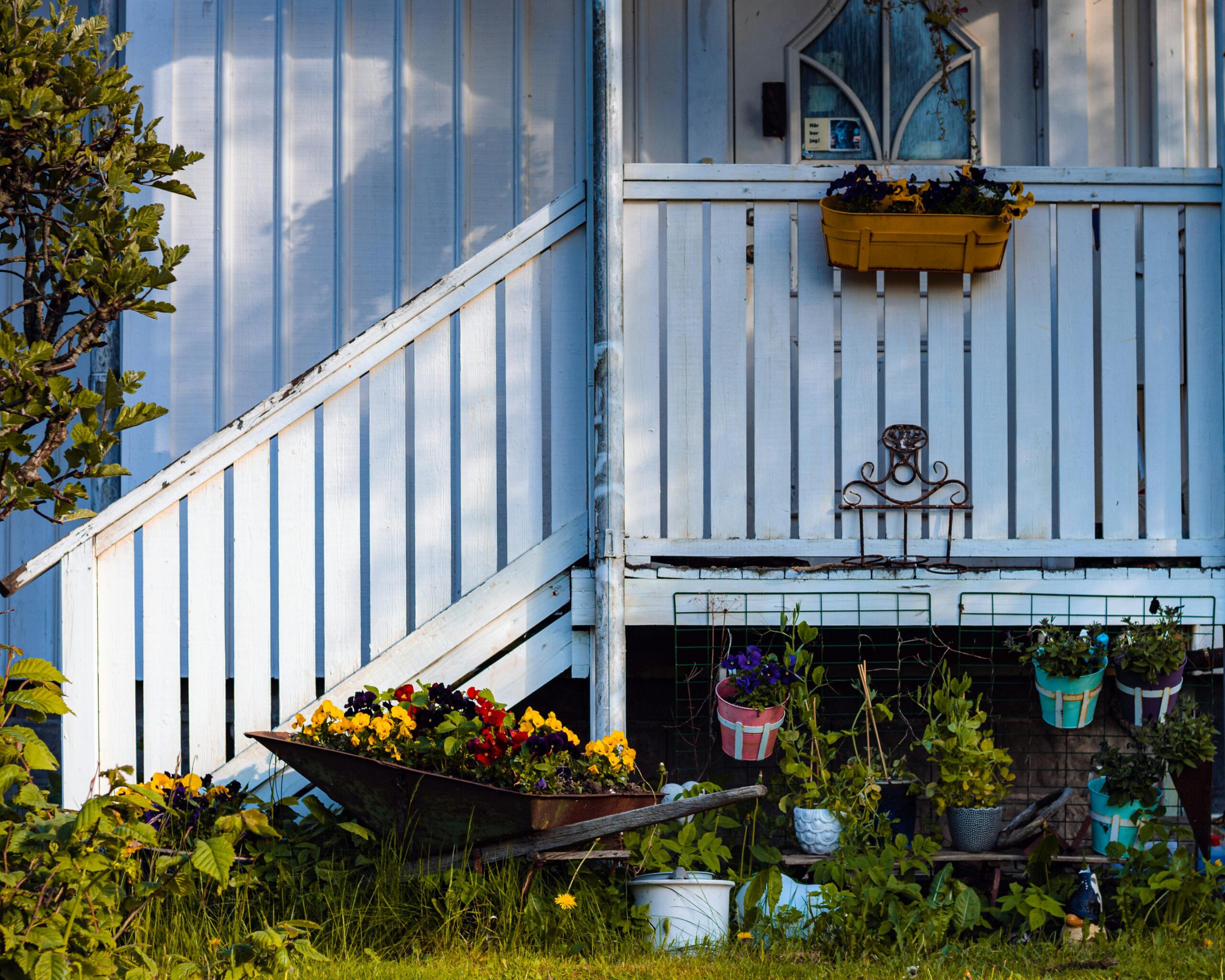How To Design a Greener Better Home in 2025 (Sustainable Living Tips)
Designing your dream home is about more than just choosing beautiful furniture or trendy paint colors. In 2025, eco-friendly home design has become a top priority for homeowners and designers alike. With rising energy costs, environmental concerns, and a growing awareness of sustainable living, more people are seeking ways to build and decorate homes that are kind to both the planet and their wallets.

The good news? Going green at home doesn’t mean sacrificing style or comfort. With the right design choices, you can create a space that feels modern, healthy, and sustainable. In this guide, we’ll cover practical ways to design a greener, better home in 2025—from energy efficiency to smart décor hacks.
1. Prioritize Energy Efficiency
Energy-efficient design is one of the biggest trends for homes in 2025. By reducing energy waste, you’ll not only cut down on utility bills but also lower your carbon footprint.
- Smart Thermostats: Devices like Nest or Ecobee automatically adjust your home’s heating and cooling based on your habits.
- Solar Power: Solar panels and community solar programs are becoming more affordable, making renewable energy accessible for everyday homeowners.
- LED Lighting: Replace traditional bulbs with energy-efficient LEDs, and consider motion-sensor lights to avoid unnecessary energy use.
👉 External Resource: U.S. Department of Energy – Energy Efficiency at Home
2. Use Sustainable Building Materials
Choosing eco-friendly building materials not only makes your home healthier but also reduces the environmental impact of construction.
- Flooring: Bamboo, cork, or reclaimed wood are stylish and renewable.
- Paints: Opt for low-VOC (volatile organic compound) or natural paints to improve indoor air quality.
- Walls & Insulation: Recycled steel, eco-bricks, and hempcrete are trending as sustainable alternatives.
These materials are durable, attractive, and reduce reliance on plastics or harmful chemicals.
3. Maximize Natural Light & Ventilation
Natural light and fresh air are essential for a greener, healthier home.
- Large Windows & Skylights: These reduce the need for artificial lighting during the day.
- Cross-Ventilation Layouts: Designing homes with strategically placed windows allows fresh air to flow, lowering cooling needs.
- Light Colors: Use light-colored walls, mirrors, and reflective surfaces to make spaces brighter and more open.
Not only does this save energy, but it also boosts mood and productivity.
👉 External Resource: Green Building Advisor – Passive Design Strategies
4. Create Indoor Green Spaces
Plants are not just decorative—they’re natural air purifiers. In 2025, homes are increasingly integrating indoor greenery.

- Vertical Gardens: Perfect for small spaces, vertical planters bring life into your home.
- Indoor Herb Gardens: Grow fresh basil, mint, or parsley right in your kitchen.
- Air-Purifying Plants: Spider plants, snake plants, and peace lilies help remove toxins from indoor air.
5. Design Water-Saving Systems
Water scarcity is a global concern, making conservation a must for eco-friendly homes.
- Rainwater Harvesting: Collecting and reusing rainwater reduces dependency on municipal water.
- Low-Flow Fixtures: Install water-saving faucets, dual-flush toilets, and efficient showerheads.
- Eco Landscaping: Use drought-resistant plants and drip irrigation to minimize outdoor water use.
👉 External Resource: EPA WaterSense – Saving Water at Home
6. Smart & Multi-Functional Spaces
Modern eco-friendly homes focus on doing more with less.
- Modular Furniture: Sofas that turn into beds or tables with hidden storage maximize space.
- Multi-Purpose Rooms: A guest bedroom can double as a home office.
- Smart Technology: Energy-monitoring devices track usage and suggest improvements.
This approach minimizes material use and reduces clutter while boosting convenience.
7. Reduce, Reuse & Upcycle in Interiors
Before buying new, think about how you can repurpose existing items.
- Repaint or reupholster old furniture instead of replacing it.
- Use thrifted or second-hand items for unique, affordable décor.
- Repurpose jars, baskets, and old wood into functional storage solutions.
Not only is this eco-friendly, but it also adds character to your home.
10 Easy Ways to Decorate Your Home Green (and Save Money!)
8. Improve Indoor Air Quality
A healthy home is a greener home. Indoor air quality is often worse than outdoor air, especially in urban environments.
- Air-Purifying Plants (peace lily, snake plant, aloe vera).
- Avoid Synthetic Fragrances: Use natural candles, beeswax, or essential oils.
- Ventilation: Install proper exhaust systems in kitchens and bathrooms.
👉 External Resource: Harvard School of Public Health – Healthy Buildings
9. Adopt Minimalist & Zero-Waste Décor

Minimalism is not just a style—it’s a sustainability choice.
- Focus on quality over quantity.
- Avoid plastic-heavy décor or disposable trends.
- Support local artisans to reduce shipping emissions.
A minimalist home is easier to maintain, more cost-efficient, and better for the environment.
10. Invest in Long-Term Sustainability
Going green is about future-proofing your home.
- Add home insulation to save energy in heating and cooling.
- Plan EV (electric vehicle) charging stations in garages.
- Choose timeless designs that won’t need frequent renovations.
These choices may cost more upfront but save money and resources in the long run.
Final Thoughts
Designing a greener, better home in 2025 is about making smarter choices today that will benefit tomorrow. From energy efficiency to air quality, every decision plays a role in reducing your environmental impact. The best part? A sustainable home is not just eco-friendly—it’s healthier, cozier, and more affordable in the long run.
If you’re starting fresh or simply upgrading your existing space, use these tips to create a home that reflects not only your personal style but also your commitment to a better planet.
FAQs About Designing a Greener Home
1. Is it expensive to design an eco-friendly home?
Not necessarily. While some investments like solar panels cost more upfront, many eco-friendly choices (like LED lights or low-flow fixtures) are affordable and save money over time.
2. Can small apartments be designed to be greener?
Yes! Even in small spaces, you can add indoor plants, use modular furniture, and prioritize energy efficiency.
3. What’s the easiest first step for a greener home?
Switching to LED bulbs, adding plants, and reducing plastic waste are simple and affordable steps anyone can take.
4. Are sustainable materials durable?
Absolutely. Bamboo, reclaimed wood, and recycled materials are often more durable than traditional options.
5. How do I keep my home eco-friendly long-term?
Maintain energy-efficient habits, invest in durable furnishings, and avoid impulse purchases that lead to waste.
